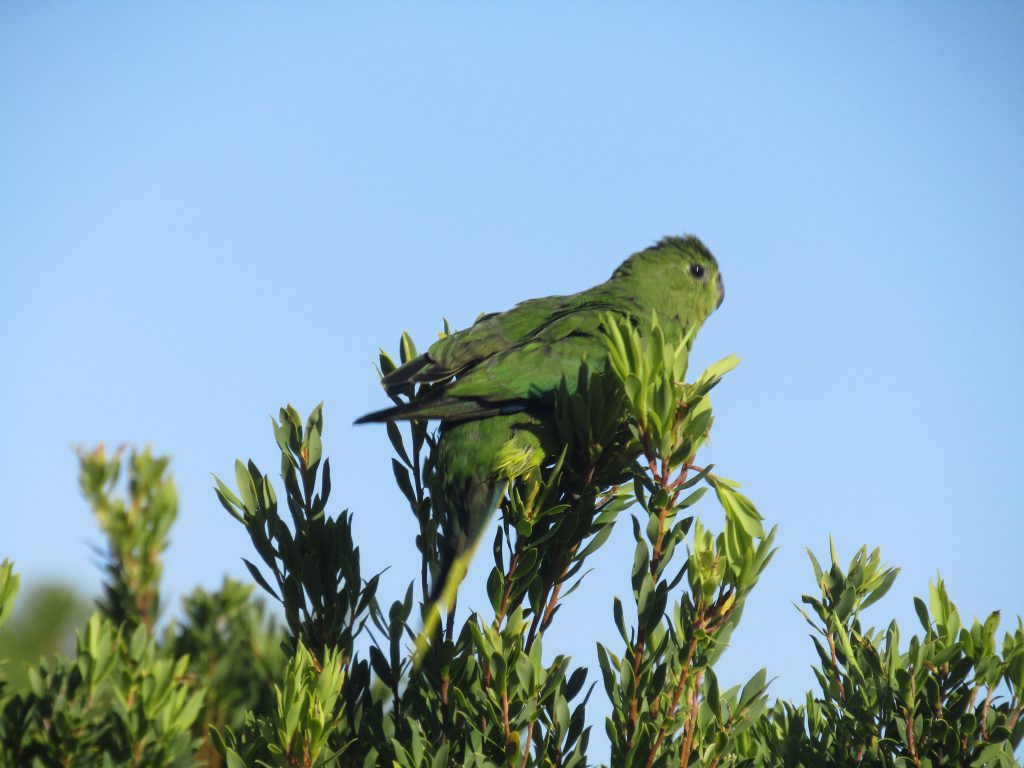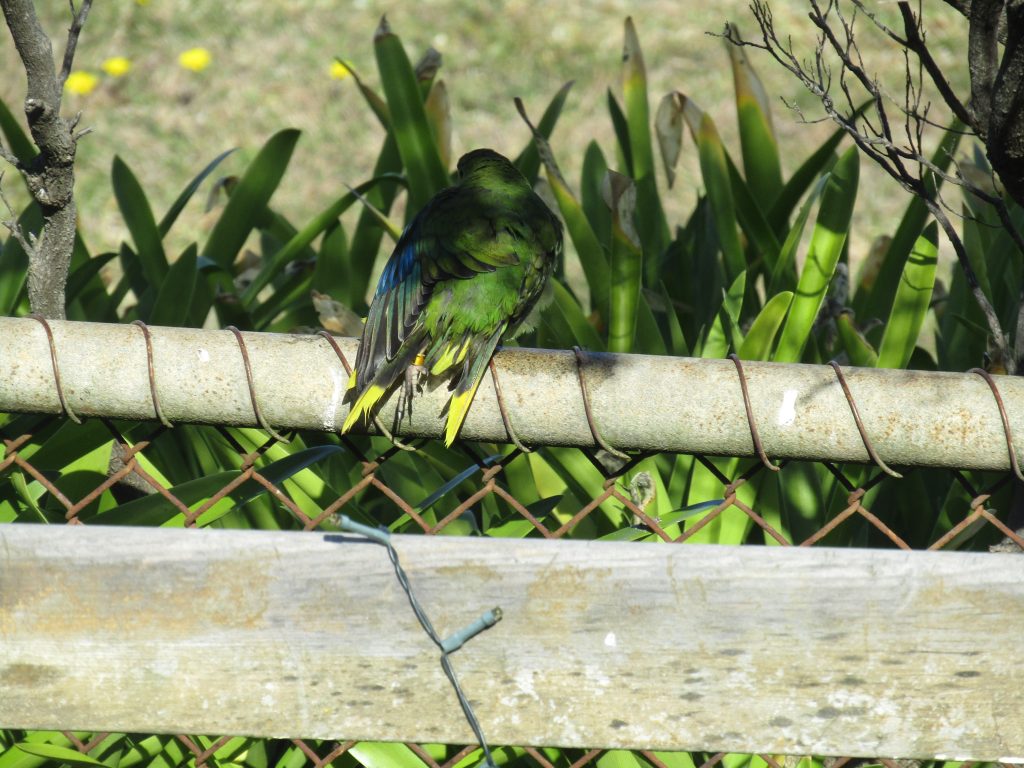A very exciting rare visitor to the south-west of Victoria!
I had moments of doubt when I wondered if this day would ever come…
This is my fourth year coordinating the Orange-bellied Parrot winter counts in south-west Victoria and I must say on some days I was wondering if I ever would be lucky enough to have a confirmed sighting in our region. Four years of trying to cover the huge stretch of coast between Nelson and Princetown and prioritise sites … Four years of trying to think like an OBP and figuring out what spot they might decide to be the most appropriate for them to feed, roost or fly through. Honestly, I always felt like our thinking might be more predictable than the species’ behaviour. However, we really don’t have many more options than just trying to talk to as many people as we can when we’re out in the field; talking to landowners, communities and interest groups and trying to spread the word whenever we have the opportunity in the hope that if more eyes are looking out for them it is more likely to spot one of the few OBPs.
Late last year we had a suspicious sighting reported from Princetown. Although the timing wasn’t quite right, talking to the person observing the two birds made us think it could have been two of the mainland released birds which may not have migrated to Tasmania. However, we had no proof and therefore could not confirm the sighting. Then earlier this season we had a couple more suspicious sightings around Peterborough and Princetown, but again it seemed to be one or two lonely OBPs that people would get a glimpse of. The birds seemed to show themselves enough to make people stop in their tracks but not for long enough to let observers have a good enough look to have it confirmed. Personally I felt like I was always half a step behind. Following up on sightings which all sounded credible but were so random that it was really hard to even decide where to start looking for the birds.

A captive-bred OBP, which successfully migrated from Melaleuca to Peterborough for the first time. (Image: Oliver Moles)
Last week, the moment I had been barely daring to hope for, happened. I got back into phone coverage from a day out in the field and found text and voice messages and emails regarding a confirmed OBP sighting with photo evidence! Wow, how exciting!
Finally! Two OBPs have been confirmed in south-west Victoria for the first time in years.
Two birds showed up in someone’s backyard in Peterborough for a splash and a play in the birdbath! The interesting thing is that this sighting is right in the middle of all the other suspicious reports and rumours that we’ve been following up. This goes to show that our best shot at finding these birds really is to have as many people out there keeping an eye out for them.

First confirmed OBP sighting in south-west Victoria in many years. Can you see the leg-band? (Image: Oliver Moles)
The great news is that one of the sighted OBPs is a female with the leg band combination GoldT/Yellow. This female is from the 2020 juvenile release and was last seen at Melaleuca on the 26/3/2020. The second bird observed was unbanded. At this stage we are only aware of one unbanded wild bird born in 2016 which was last sighted in Melaleuca on the 17/2/2020. Unfortunately, we don’t have enough information to confirm that that was the same bird sighted in Peterborough.
Besides that confirmed sighting, we have additional reports regarding a possible sighting near Swan Lake; we haven’t been able to confirm that yet but it looks like they could be coming closer to the SA border.
This is once again a reminder that we really can’t predict where these birds are and where it is likely to spot them. It is important to remind ourselves that taking good notes, possibly a photo and have a close look for leg band colours is the most important thing to be able to identify which individual bird we’re looking at and to be able to confirm a sighting. And please remember if you do see one let me know as soon as possible so that I can follow up on it if necessary.
These sightings in our area are in addition to seven other confirmed sightings of migrant OBPs arriving in Victoria so far this year. The recovery program announced in autumn that over 100 birds were flying north from Tasmania; a greater number than has been seen for over a decade. The chance of finding some of those birds this year is very real. The extra birds flying north were a result from a successful breeding season in the wild, combined with the largest ever release of juveniles in late summer. As many of the birds in the wild are young, they’ll be finding winter sites for the first time in their lives, and might surprise us with some of their choices.
We would like to remind everyone to follow any government directions relevant to your area for managing the risk of COVID-19 when you go out walking and keeping your eyes out for OBPs.
So, who will find the next bird? …
The OBP project is supported by Glenelg Hopkins CMA and the Department of Environment, Land, Water and Planning through funding from the Australian Government’s National Landcare Program.
